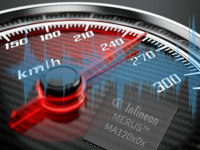
Here is an introduction from Jens Tybo Jensen:
At the turn of the century, the advent of Class D audio amplifiers, which are a lot more power efficient than previous amplifier classes — especially at high power output levels, meant that audio manufacturers could now boast huge output power numbers. For that reason, the equivalent of the proverbial “top speed” cliché started to get a lot of marketing attention. However, although their efficiency is a lot higher than with previous amplifier classes, conventional Class D amplifiers are still not particularly efficient at lower output power levels.
The issue with this, is that for real-life input signals such as speech or music, where the input signal will be at or near idle most of the time (i.e., where the average output power is much lower than the peaks), it is the efficiency near idle that becomes dominant and determines the overall power efficiency of the amplifier. Instead of converting all of the available energy into currents that can move speaker coils and produce sound, this means that most of the energy in this important output range is dissipated as heat in the amplifier and its surroundings. To make a meaningful assessment of an amplifier’s power efficiency, it needs to be benchmarked in a typical music and speech volume scenario—just like the gas mileage of a car should be measured under normal driving conditions and not at near maximum speed on an uncontrolled roll-stand.
If power efficiency is only measured at rated output power with a 1 kHz sinusoidal input source (which is actually more suitable for stress testing than as a design target) and if we pretend that speaker loads are purely resistive (which they are not), then important characteristics of these new amplifier types could be overlooked and this can result in suboptimal designs—both in terms of audio performance and overall solution cost. Let me explain why.
Read the complete article now available online!
This article was originally published in audioXpress, October 2019.






